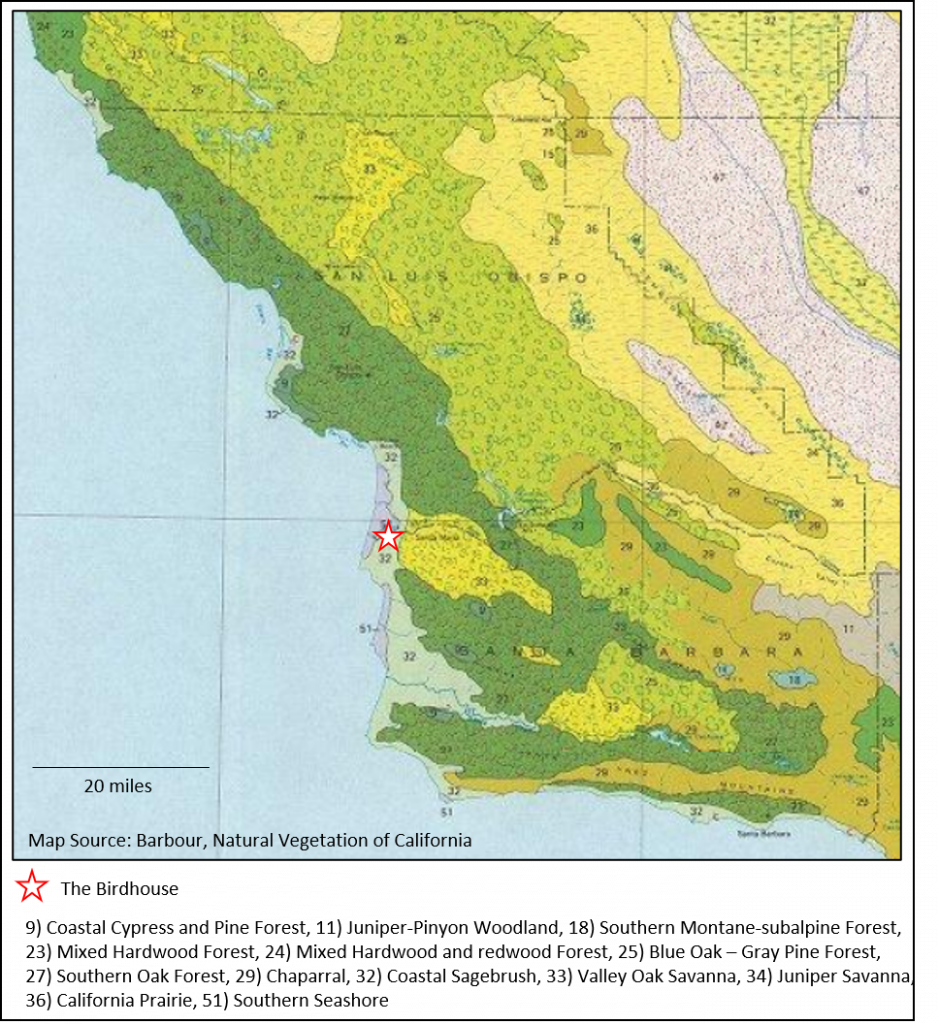Botanizing
The Morro Bay Area lies within the Central Coast Vegetation Region. Within a 20-mile radius of The Birdhouse, a person can visit five distinct vegetation types (Kuchler Formations): Coastal Cypress and Pine Forest, Blue Oak – Gray Pine Forest, Southern Oak Forest, Coastal Sagebrush, and Southern Seashore. Extend that radius to 50 miles, and you can add another eight, ranging from Prairie to Subalpine Forest. Thanks to an abundance of public lands in the region, each of these can be easily accessed by anyone.
Regional Vegetation Types

Areas of Special Botanical Interest
Land management agencies sometimes designate areas with unique plants as Areas of Special Botanical Interest, or something similar (each agency uses a different designation). The following are listed in order of increasing distance from The Birdhouse.
Native Plant Gardens
For guests who are not entirely familiar with local native plants, a good first stop would be a native plant garden where specimens are labeled. The following are listed in order of increasing distance from The Birdhouse. Some have not yet achieved a presence on the internet.
Halloway Garden, Montana de Oro Sate Park Headquarters, Los Osos
Wildflower Viewing Areas
We have a small but growing collection of native plants on The Birdhouse grounds, including California Poppy, Sky Lupine, Bush Lupine, Sticky Monkeyflower, Toyon, Narrow-leaf Milkweed, Island Snapdragon, California Fuchsia, California Brome, Blue Wildrye, California Barley, Idaho Fescue, Purple Needlegrass, and Pine Bluegrass. More impressive natural displays of native wildflowers can be observed, seasonally, at the following sites, listed in order of increasing distance from the Birdhouse.
Wildflower Viewing Season
Most wildflowers bloom on the Central Coast soon after the winter rains, typically from mid-February to late mid-May. April and May are the most dependable months. Close to the sea, where coastal fog wets plants through the summer, you will find certain wildflowers blooming throughout the year.
